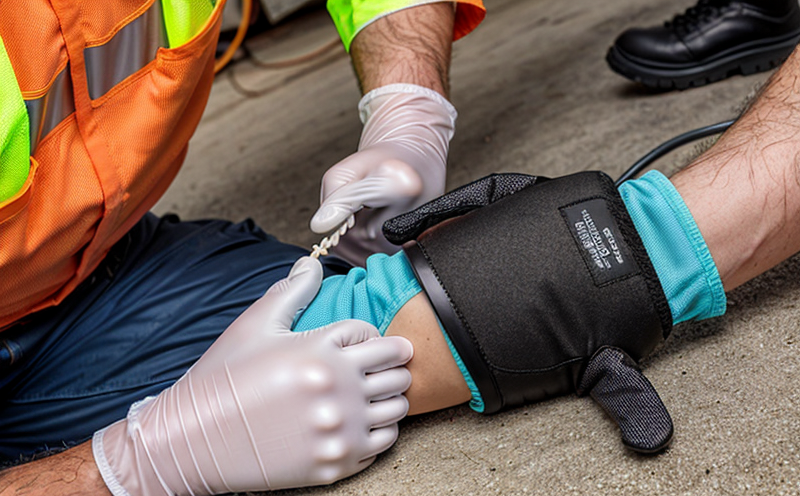Insulated electrical glove inspection
The inspection of insulated electrical gloves is a critical process in ensuring worker safety and compliance with international standards. These gloves are designed to protect workers from the risk of electric shock during tasks involving live electrical circuits. The quality managers, compliance officers, R&D engineers, and procurement teams need to understand the importance of thorough inspections to maintain high levels of occupational health and safety.
According to ISO 10528, these gloves must meet strict requirements for insulation resistance, mechanical strength, and electrical performance. The inspection process ensures that any potential weaknesses or damages are identified before they can compromise worker safety. This service is essential in industries such as manufacturing, construction, utilities, and maintenance where workers frequently handle live electrical equipment.
The gloves must be inspected regularly to ensure their continued effectiveness. The inspection should include visual checks for tears, punctures, or other visible damage, as well as more detailed tests to verify the integrity of the insulation. This service ensures that only gloves meeting international standards are used in the workplace, thereby reducing the risk of accidents and injuries.
The process involves a series of steps designed to ensure thorough inspection. First, the gloves must be visually inspected for any visible damage or wear. Any defects found during this initial check should be documented and addressed promptly. Following the visual inspection, electrical resistance tests are conducted using high-voltage testing equipment. This test checks the insulation's effectiveness by applying a specific voltage and measuring the resulting current.
The gloves must also undergo mechanical strength tests to ensure they can withstand the forces likely to be encountered during use. These tests assess factors such as tensile strength, puncture resistance, and abrasion resistance. Compliance with international standards is crucial for these tests, ensuring that only gloves meeting stringent requirements are used.
The inspection process may also include temperature cycling tests to simulate real-world conditions and ensure the gloves’ durability under varying temperatures. This test helps identify any changes in material properties or structural integrity over time. After the completion of all inspections, a detailed report is generated, documenting each step of the process and the results obtained.
Scope and Methodology
| Step | Description |
|---|---|
| Visual Inspection | Inspect gloves for visible damage, including tears and punctures. |
| Electrical Resistance Testing | Test the insulation resistance using a standard voltage and measure current flow. |
| Mechanical Strength Tests | Assess tensile strength, puncture resistance, and abrasion resistance. |
| Temperature Cycling | Simulate real-world conditions to ensure durability under varying temperatures. |
Environmental and Sustainability Contributions
- The inspection of insulated electrical gloves ensures worker safety, reducing the risk of accidents and injuries that could lead to hospitalizations or fatalities.
- This process helps prevent environmental harm by ensuring only safe equipment is used in the workplace. Properly maintained gloves extend their useful life, minimizing waste.
Use Cases and Application Examples
- In manufacturing plants where workers handle live electrical circuits during maintenance or repair tasks.
- In utility companies that work with high-voltage equipment, ensuring gloves are in perfect condition is crucial for safety.
- In construction sites where electricians and other professionals need to ensure the integrity of their protective gear.





